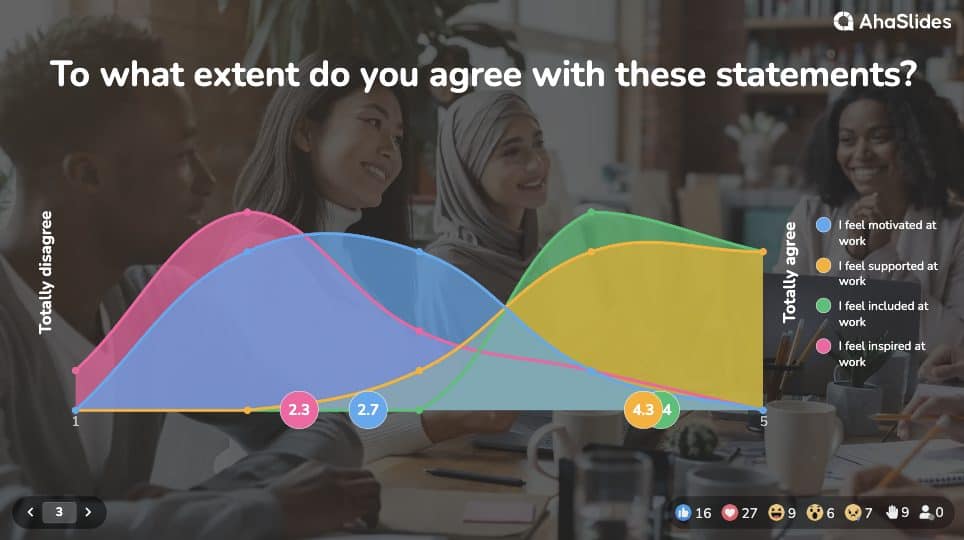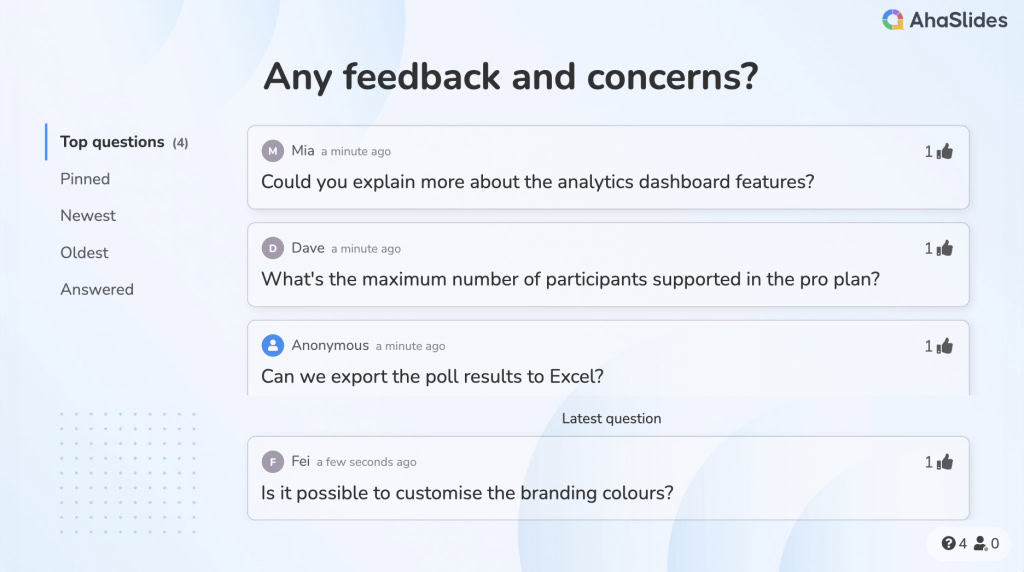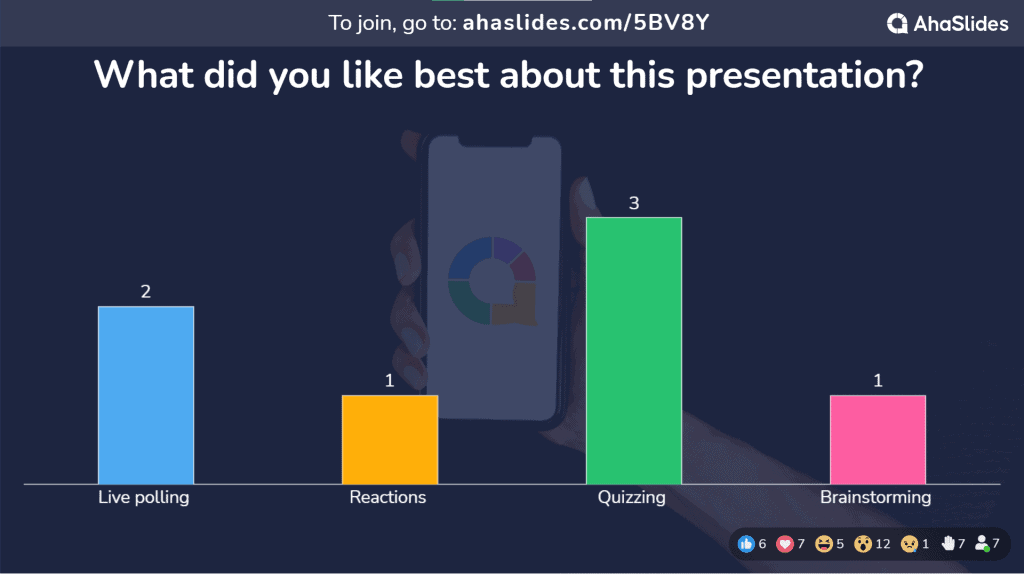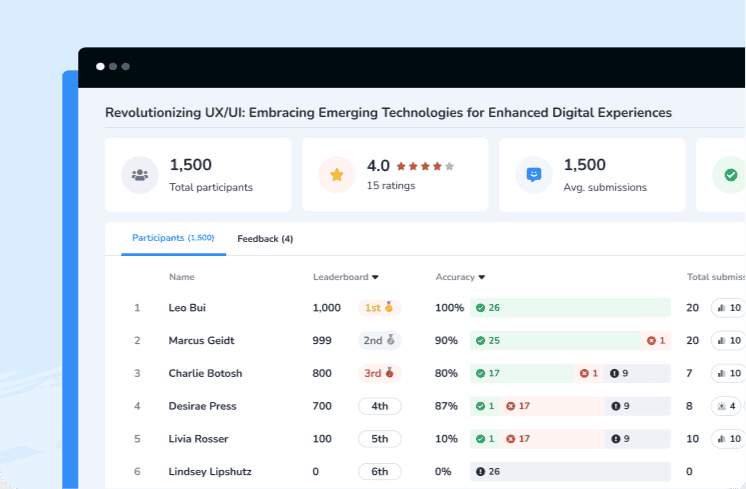Ever finished a presentation, a training session or a lesson and wondered what your audience really thought? Whether you're teaching a class, pitching to clients, or leading a team meeting, receiving feedback is crucial for improving your presentation skills and your ability to facilitate a public event and make it exciting for any participant. Let's explore how you can handle audience feedback effectively using interactive tools.
Table Of Contents
Why Do Presenters Struggle with Feedback?
Many presenters find receiving feedback challenging because:
- Traditional Q&A sessions often lead to silence
- Audience members feel hesitant to speak up in public
- Post-presentation surveys get low response rates
- Written feedback forms are time-consuming to analyze
A Guide to Receiving Feedback with AhaSlides
Here's how AhaSlides can help you gather genuine, real-time feedback:
1. Live Polls During Presentations
- Use quick pulse checks to gauge understanding
- Create word clouds to capture audience impressions
- Run multiple-choice polls to measure agreement
- Collect responses anonymously to encourage honesty

2. Interactive Q&A Sessions
- Enable audience members to submit questions digitally
- Let participants upvote the most relevant questions
- Address concerns in real-time
- Save questions for future presentation improvements
See how our interactive Q&A tool works.

3. Real-Time Reaction Collection
- Gather immediate emotional responses
- Use emoji reactions for quick feedback
- Track engagement levels throughout your presentation
- Identify which slides resonate most with your audience
Best Practices for Collecting Presentation Feedback
Set Up Your Interactive Elements

Embed polls throughout your presentation
Create open-ended questions for detailed feedback


Design multiple-choice questions for quick responses
Add rating scales for specific aspects of your presentation

Time Your Feedback Collection
- Start with an icebreaker poll to encourage participation
- Insert checkpoint polls at natural breaks
- End with comprehensive feedback questions
- Export results for later analysis
Act on the Feedback
- Review response data in AhaSlides' dashboard
- Identify patterns in audience engagement
- Make data-driven improvements to your content
- Track progress across multiple presentations

Pro Tips for Using AhaSlides for Feedback
- For Educational Settings
- Use quiz features to check understanding
- Create anonymous feedback channels for honest student input
- Track participation rates for engagement metrics
- Export results for assessment purposes
- For Business Presentations
- Integrate with PowerPoint or Google Slides
- Use professional templates for feedback collection
- Generate engagement reports for stakeholders
- Save feedback questions for future presentations
Final Thoughts
Start creating interactive presentations with built-in feedback tools on AhaSlides. Our free plan includes:
- Up to 50 live participants
- Unlimited presentations
- Full access to feedback templates
- Real-time analytics
Remember, great presenters aren't just good at delivering content – they're excellent at gathering and acting on audience feedback. With AhaSlides, you can make feedback collection seamless, engaging, and actionable.
FAQs
What's the best way to collect audience feedback during presentations?
Use AhaSlides' interactive features like live polls, word clouds, and anonymous Q&A sessions to gather real-time feedback while keeping your audience engaged.
How can I encourage honest feedback from my audience?
Enable anonymous responses in AhaSlides and use a mix of multiple-choice, rating scales, and open-ended questions to make feedback submission easy and comfortable for all participants.
Can I save feedback data for future reference?
Yes! AhaSlides allows you to export feedback data, track engagement metrics, and analyze responses across multiple presentations to help you improve continuously.
Ref: DecisionWise | Indeed








